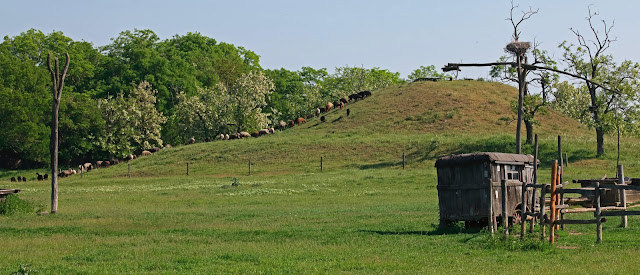The Editors of the IAVS (International Association for Vegetation Science) have launched a new and interesting topic in the IAVS Bulletin entitled 'Recently defended theses in vegetation science'. Their aim is to introduce the research topics of young vegetation scientist all over the world who have recently defended their PhD. It is a pleasure that among others, the PhD topic of my former PhD student, Réka Kiss is introduced in the current Bulletin. You can read about Réka's research topics by clicking here and going to pages 34-35.
 |
| Still life in the Hortobágy: Never-ending monitoring of the vegetation of establishment gaps.. |
Réka has defended her thesis in September 2018. (you can read about her defense here)
Publications related to her thesis
Kiss, R., Deák, B., Török, P., Tóthmérész, B.., Valkó, O. (2018) Grassland seed bank and community resilience in a changing climate. Restoration Ecology, 26, S141-S150. PDF
Kiss, R., Sonkoly, J., Török, P., Tóthmérész, B., Deák, B., Tóth, K., Lukács, K., Godó, L., Kelemen, A., Miglécz, T., Radócz, Sz., Tóth, E., Balogh, N., Valkó, O. (2018) Germination capacity of 75 herbaceous species of the Pannonian flora and implications for restoration. Acta Botanica Hungarica, 60, 357-368. PDF
Kiss, R., Valkó, O., Tóthmérész, B., Török, P. (2016) Seed bank research in Central-European grasslands - An overview. In: Murphy, J. (ed.) Seed Banks: Types, Roles and Research, Nova Science Publishers, 1-34. PDF
Kiss, R. (2016) A talaj-magbank szerepe a magyarországi növényközösségek dinamikájában és helyreállításában. Kitaibelia, 21, 116-135. PDF
Valkó, O., Deák, B., Török, P., Kirmer, A., Tishew, S., Kelemen, A., Tóth, K., Miglécz, T., Radócz, Sz., Sonkoly, J., Tóth, E., Kiss, R., Kapocsi, I., Tóthmérész, B. (2016) High-diversity sowing in establishment windows: a promising new tool for enhancing grassland biodiversity. Tuexenia, 36, 359-378. PDF
Török, P., Kelemen, A., Valkó, O., Miglécz, T., Tóth, K., Tóth, E., Sonkoly, J., Kiss, R., Csecserits, A., Rédei, T., Deák, B., Szűcs, P., Varga, N., Tóthmérész, B. (2017) Succession in soil seed banks and its implications for restoration of calcareous sand grasslands. Restoration Ecology, 26, S134-S140. PDF
Godó, L., Tóthmérész, B., Valkó, O., Tóth, K., Kiss, R., Radócz, Sz., Kelemen, A., Török, P., Švamberková, E., Deák, B. (2018) Ecosystem engineering by foxes is mediated by isolation in grassland fragments. Ecology and Evolution, 8, 7044-7054. PDF





